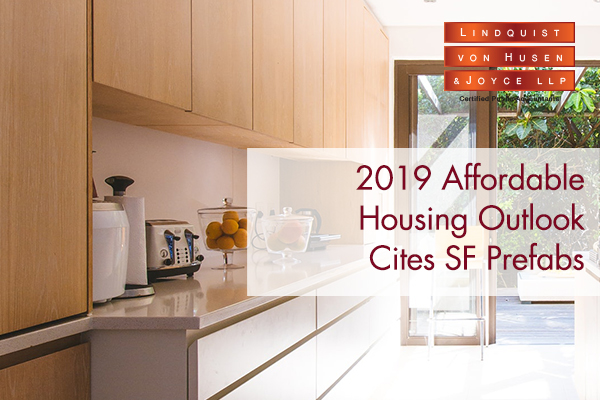
In our “in case you missed it” category, we recently highlighted a report in our News Updates from Multi-Housing News on what’s ahead for affordable housing in 2019.
This outlook touches on the multitude of constraints that made 2018 a difficult year for the industry as well as why these constraints continue: land costs, materials costs, interest rates, diminished financing and tax options, and zoning issues. Even Opportunity Zones as an avenue to support new affordable housing development are constrained by construction project backlogs and unclarified local tax breaks and incentives. Only those cities that can afford incentives for new affordable housing development will be early players, according to the report.
Outside the government-subsidized affordable housing market, there is also a growing gap for workforce housing that supports key members of communities, ranging from law enforcement to teachers and public works employees.
“The naturally occurring affordable housing market is an institutionally sized market that is four times larger than that of the government-subsidized affordable one and specifically geared towards meeting the needs of this ‘missing middle.’”
—Inna Khidekel, Bridge Capital Markets Group Managing Director, Multi-Housing News
Some of the outlook was positive, including in our own backyard. The report emphasized innovation in public-private partnerships as well as private and not-for-profit partnerships such as those between private developers and health care entities. It cited markets such as San Francisco for developing communities for new housing types (e.g. prefab housing) and Las Vegas for rehabbing existing housing for affordable rents.
If there is one big takeaway from this report, it’s that the housing crisis is expected to get worse before it gets better, but there are silver linings for innovation and investment. For example, market rate housing targeting household incomes of greater than $75,000 (U.S. median average is $60,000) will continue to dominate residential construction in 2019. On the upside, non-government subsidized affordable housing is still viewed as an attractive institutional investment because it is recession-resistant and can provide returns in an environment of rising interest rates.
With these dynamics in play, 2019 may be a good year to review your organization’s long-term vision for affordable housing development with a focus on partnerships and private investment. Talk to LvHJ to learn more.
Source:
Affordable Housing News
https://www.multihousingnews.com/post/affordable-housing-what-to-expect-in-2019/








